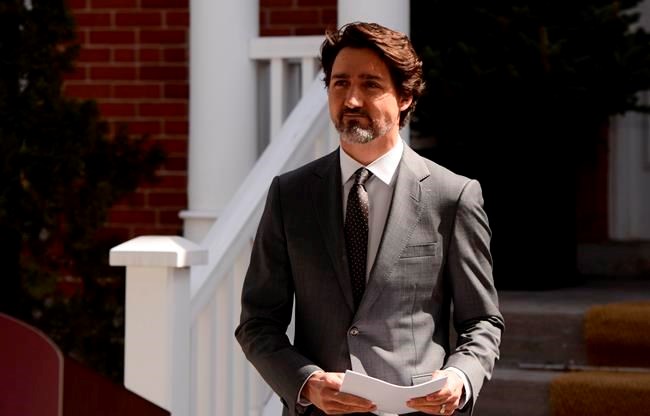OTTAWA — The federal deficit for the year could top $252.1 billion as a result of the COVID-19 pandemic, Parliament's budget watchdog predicted in a report that warned the figure could go even higher if emergency measures remain in place longer than planned.
The figure is an estimate based on the almost $146 billion in spending measures the government has announced to help cushion the economic blow from the pandemic, as well as estimated declines in the country's gross domestic product and the price of oil remaining well below previous expectations.
Parliamentary budget officer Yves Giroux's report on Thursday noted that the annual deficit as a share of the national economy would be the largest on record since the late 1960s, as his team expects the economy is set to contract by 12 per cent — a rate not seen since 1961.
So far, more than seven million people have received federal emergency aid through the Canada Emergency Response Benefit, which has paid out more than $25.6 billion in benefits, based on the latest federal figures.
Giroux said the program could end up costing $35.5 billion, and that it could reach 8.5 million people whose income has all but dried up due to COVID-19. He also estimated that a highly anticipated wage subsidy program that begins payments next week could end up paying out $76 billion, above the $73 billion already budgeted.
What it added up to was a debt-to-GDP ratio — the Liberals' favoured fiscal anchor — that could jump to 48.4 per cent under the scenario Giroux envisioned, and begin to fall again as spending unwinds.
"But," Giroux said, "if some of the measures are extended or made permanent, the federal debt ratio will keep rising."
And along with it, the size of the federal deficit for this fiscal year.
The Liberals have said they'll spend what is needed to bridge the country through the crisis, which has seen non-essential businesses closed and workers ordered to stay home.
Restrictions to slow the spread of the pandemic that were put in place in March have put a freeze on economic activity, with business revenues dropping sharply, and millions of workers either laid off or working fewer hours.
Prime Minister Justin Trudeau wouldn't speculate Thursday on how the government would handle the massive deficit once the economy rebounds, or how much more spending the Liberals envision to aid in a recovery.
"There will be time after this is all done as we figure out how exactly this unfolds, where we will have to make next decisions on how that recovery looks," he said at a news conference on Parliament Hill, "but right now our focus is on getting through this together as a country."
Federal officials are considering how long the emergency supports will remain in place, or what form they might take when a recovery starts. MPs on a House of Commons committee were told by the deputy minister of Employment and Social Development Canada that the recovery won't look like anything before, but be "much more unpredictable."
Graham Flack, whose department oversees social safety net programs, said discussions are focused on dealing with a recovery that may start and stop at different times, across different regions and sectors.
"How will the income support measures have to be tailored to deal with what might be some sectors where employment comes back full on, and other sectors there's still a longer period and what does that mean for the duration of the benefits?" he said during the videoconference hearing.
"The government has indicated that these measures are in place for at least this period, with the opportunity to increase the period if that's necessary."
Giroux's report said the estimates for spending are one possible scenario if current public health measures remain or are slowly, but not entirely, lifted over the rest of the calendar year.
Once a recovery begins, the rollback on federal spending should give way to monetary policy from the central bank. Since the onset of the crisis, the Bank of Canada has cut its key interest from 1.75 per cent to 0.25 per cent, which is essentially as low it can go for the central bank.
It has also gone on an unprecedented government bond purchasing program, effectively providing low-cost loans to the federal treasury.
In a speech delivered Thursday afternoon, governor Stephen Poloz said the bank's measures will be central to a recovery, and suggested lenders pass on the monetary stimulus to average Canadians to help with economic lift-off.
"For this to happen, we need monetary stimulus to reach the ultimate borrower," according to the text of his speech posted online.
"That, in turn, requires more improvement in market function; in particular, posted longer-term mortgage rates were proving to be sticky because banks were still funding themselves at relatively steep rates in bond markets."
This report by The Canadian Press was first published April 30, 2020.
Jordan Press, The Canadian Press



